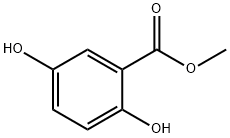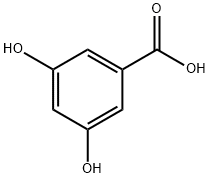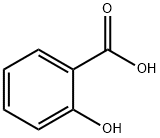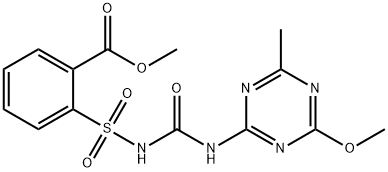Methyl 2,5-dihydroxybenzoate
Synonym(s):Methyl gentisate
- CAS NO.:2150-46-1
- Empirical Formula: C8H8O4
- Molecular Weight: 168.15
- MDL number: MFCD00016464
- EINECS: 218-427-8
- SAFETY DATA SHEET (SDS)
- Update Date: 2025-12-17 09:49:47

What is Methyl 2,5-dihydroxybenzoate?
The Uses of Methyl 2,5-dihydroxybenzoate
Methyl 2,5-dihydroxybenzoate (methyl gentisate) may be used as a starting material in the synthesis of euonyminol.
The Uses of Methyl 2,5-dihydroxybenzoate
methyl gentisate is also known as methyl dihydroxybenzoate. It is a skin-lightening ingredient that acts by inhibiting the melanocyte’s production of tyrosinase. It can be naturally obtained from gentian root.
Definition
ChEBI: Methyl 2,5-dihydroxybenzoate is a member of phenols and a benzoate ester.
General Description
Methyl 2,5-dihydroxybenzoate (methyl gentisate) is an alkyl ester of gentisic acid. It is reported to show less cytotoxic and mutagenic activity than hydroquinone with a potential to inhibit melanogenesis. It has been synthesized from 2,5-dihydroxybenzoic acid. The crystal structure of the molecule was found to be planar.
Properties of Methyl 2,5-dihydroxybenzoate
| Melting point: | 86-88 °C (lit.) |
| Boiling point: | 136 °C / 1mmHg |
| Density | 1.354±0.06 g/cm3(Predicted) |
| storage temp. | Inert atmosphere,Room Temperature |
| solubility | DMSO (Slightly), Methanol (Slightly) |
| form | Solid |
| pka | 9.87±0.18(Predicted) |
| color | Off-White to Pale Beige |
| Stability: | Hygroscopic |
| CAS DataBase Reference | 2150-46-1(CAS DataBase Reference) |
| NIST Chemistry Reference | Benzoic acid, 2,5-dihydroxy-, methyl ester(2150-46-1) |
Safety information for Methyl 2,5-dihydroxybenzoate
| Signal word | Warning |
| Pictogram(s) |
 Exclamation Mark Irritant GHS07 |
| GHS Hazard Statements |
H315:Skin corrosion/irritation H319:Serious eye damage/eye irritation H335:Specific target organ toxicity, single exposure;Respiratory tract irritation |
| Precautionary Statement Codes |
P261:Avoid breathing dust/fume/gas/mist/vapours/spray. P264:Wash hands thoroughly after handling. P264:Wash skin thouroughly after handling. P271:Use only outdoors or in a well-ventilated area. P280:Wear protective gloves/protective clothing/eye protection/face protection. P302+P352:IF ON SKIN: wash with plenty of soap and water. P305+P351+P338:IF IN EYES: Rinse cautiously with water for several minutes. Remove contact lenses, if present and easy to do. Continuerinsing. |
Computed Descriptors for Methyl 2,5-dihydroxybenzoate
| InChIKey | XGDPKUKRQHHZTH-UHFFFAOYSA-N |
New Products
4,4-Difluoropiperidine hydrochloride tert-butyl 9-methoxy-3-azaspiro[5.5]undecane-3-carboxylate Indole Methyl Resin N-Isopropylurea N,N-Dicyclohexylcarbodiimide(DCC) MELDRUMS ACID 5-METHYLISOXAZOLE-4-CARBOXYLIC ACID Magnessium Bis glycinate Zinc ascorbate 1-bromo-2-butyne 2-acetamidophenol 9(10H)-anthracenone Erythrosin B, 4-Piperidinopiperidine 2-((4-morpholinophenylamino) (methylthio) methylene) malononitrile 2,4-dihydroxybenzaldehyde 3-(4-morpholinophenylamino)-5-amino-1H-pyrazole-4-carbonitrile Methyl 2-methylquinoline-6-carboxylate 2,6-dichloro-4-nitropyridine 4-Bromo-2-chlorobenzonitrile 2-(benzylamino)acetic acid hydrochloride 4-(tert-Butoxycarbonylamino)but- 2-ynoic acid 3,4-dihydro-2H-benzo[b][1,4]dioxepine 1-Phenyl-1-cycloprppanecarboxylicacidRelated products of tetrahydrofuran








You may like
-
 2150-46-1 Methyl 2,5-dihydroxybenzoate 98%View Details
2150-46-1 Methyl 2,5-dihydroxybenzoate 98%View Details
2150-46-1 -
 Methyl 2,5-dihydroxybenzoate 98.00% CAS 2150-46-1View Details
Methyl 2,5-dihydroxybenzoate 98.00% CAS 2150-46-1View Details
2150-46-1 -
 Methyl 2,5-Dihydroxybenzoate CAS 2150-46-1View Details
Methyl 2,5-Dihydroxybenzoate CAS 2150-46-1View Details
2150-46-1 -
 Methyl 2,5-dihydroxybenzoate CAS 2150-46-1View Details
Methyl 2,5-dihydroxybenzoate CAS 2150-46-1View Details
2150-46-1 -
 3-(4-amino-1-oxoisoindolin-2-yl)-1-methylpiperidine-2,6-dione 98%View Details
3-(4-amino-1-oxoisoindolin-2-yl)-1-methylpiperidine-2,6-dione 98%View Details -
 20677-73-0 (2,2-diethoxyethyl)methylamine 98%View Details
20677-73-0 (2,2-diethoxyethyl)methylamine 98%View Details
20677-73-0 -
 3-(4-(hydroxyamino)-1-oxoisoindolin-2-yl)piperidine-2,6-dione 98%View Details
3-(4-(hydroxyamino)-1-oxoisoindolin-2-yl)piperidine-2,6-dione 98%View Details -
 57381-49-4 2-bromo-4-chlorobenzonitrile 98%View Details
57381-49-4 2-bromo-4-chlorobenzonitrile 98%View Details
57381-49-4
Statement: All products displayed on this website are only used for non medical purposes such as industrial applications or scientific research, and cannot be used for clinical diagnosis or treatment of humans or animals. They are not medicinal or edible.
